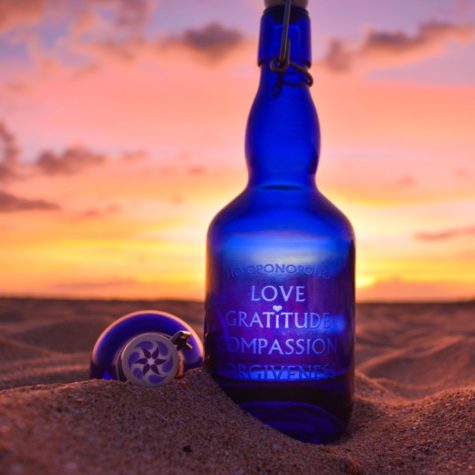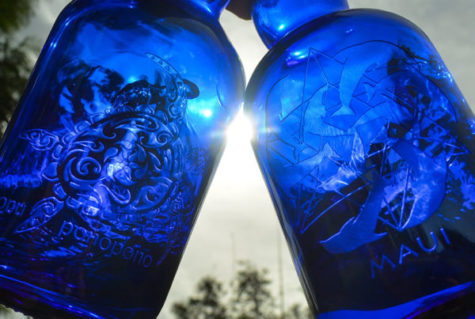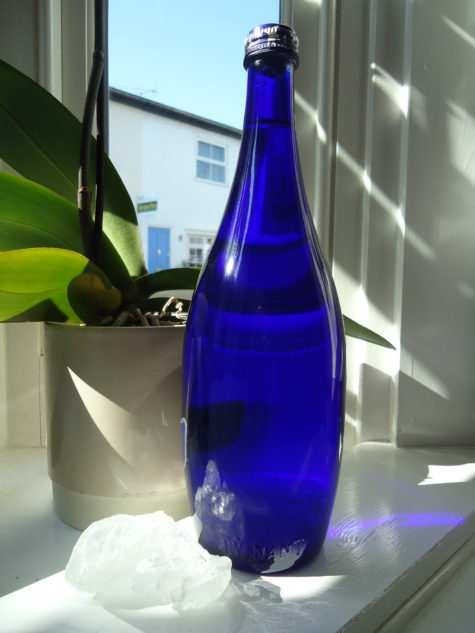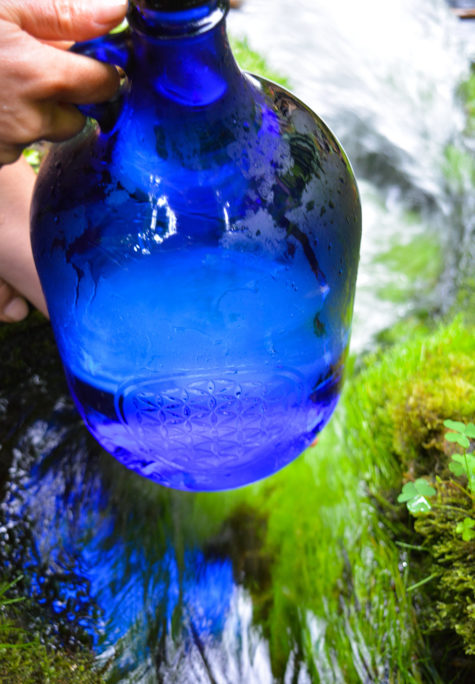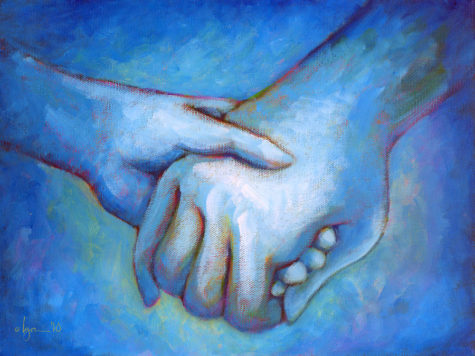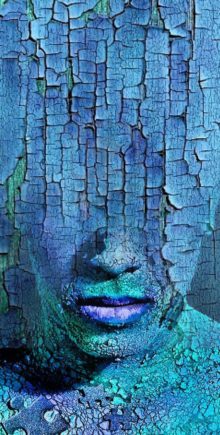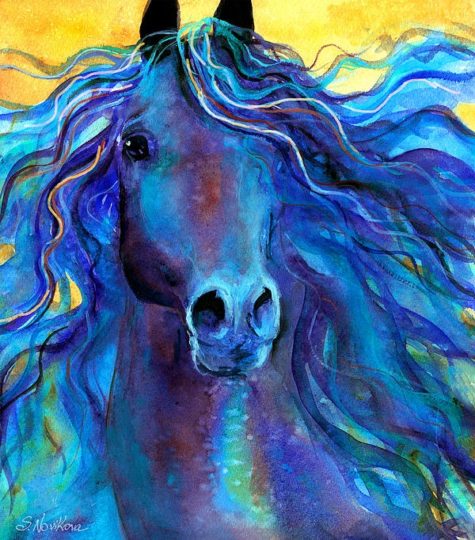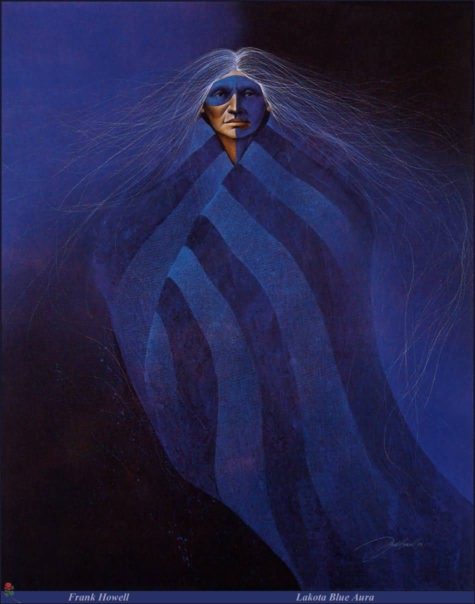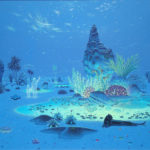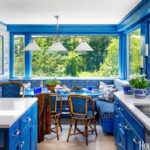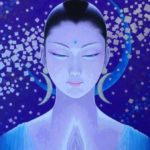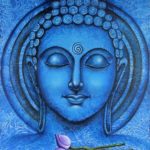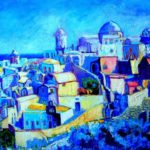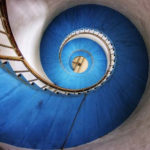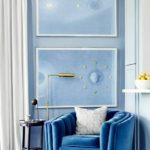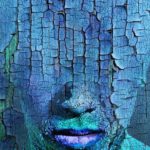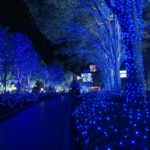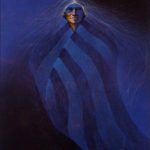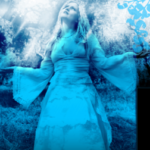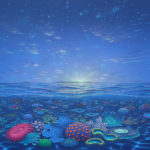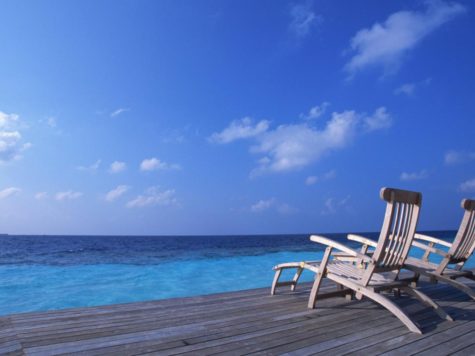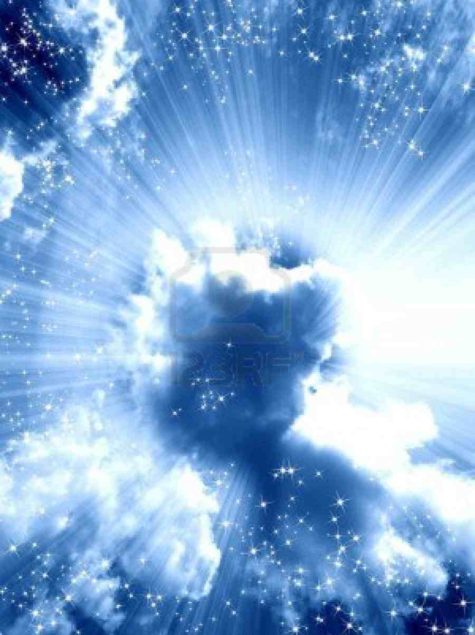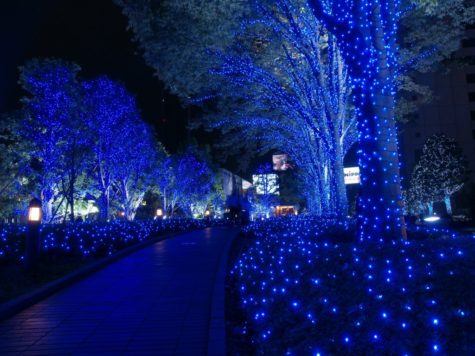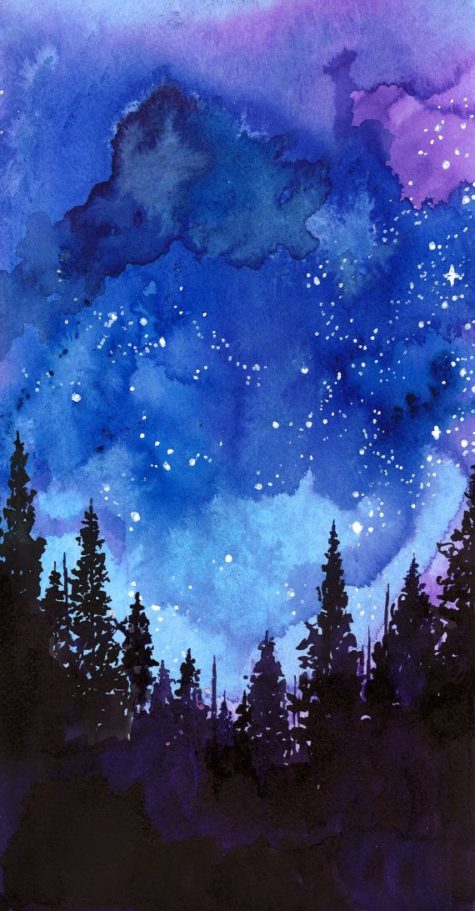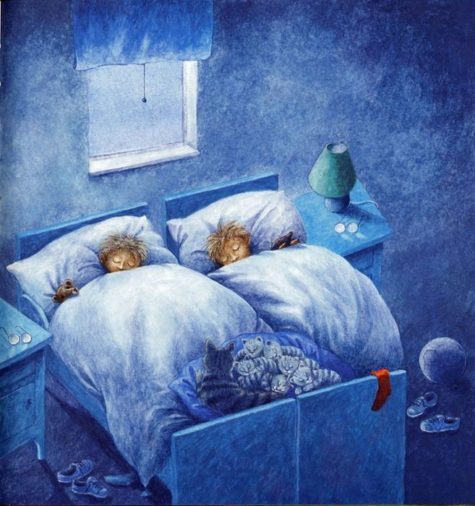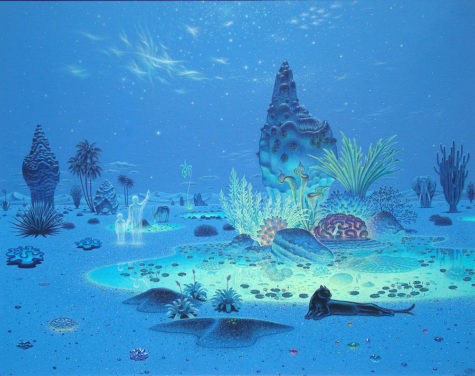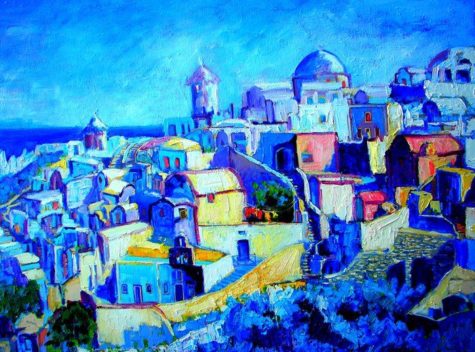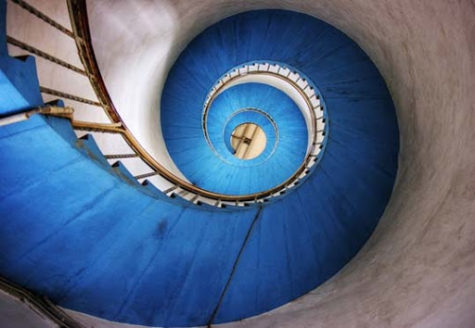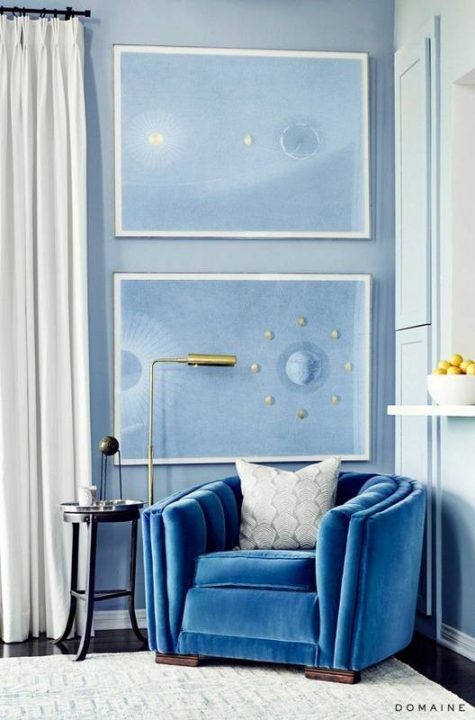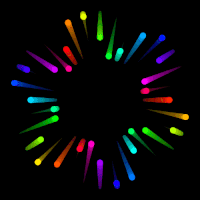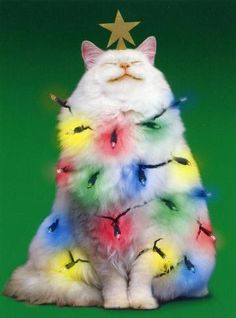Blue
Blue Solar Water
Blue Solar Water is easy to make, delicious to drink and is very a powerful tool for healing the body and spirit.
As we know, water carries vibrations, energy frequency, crystals, colors… Blue solar water provides the best: the powerful energy of the sun, the source of all life, and the fascinating properties of the healing and calming blue color. This water has become a favorite and popular after the book Zero Limits by Dr. Hew Len and above all through Ho’oponopono, an ancient Hawaiian healing technique.
In addition to being extremely healthy, this water helps cleanse the deep negative subconscious programs that we automatically repeat over and over again. Blue solar water heals emotional wounds and blockages, takes them to the surface and relieves us from them so that we get reset back to zero, in a pure state, to a clean start, without the background noise of negative thoughts. This water meets positivity, peace and love. And everyone can drink it, children, sick with cancer, especially those on chemotherapy. It is even tastier than plain water. And it is very easy to make.
Why blue?
Blue is the color of the fifth chakra, the so-called power center or the throat chakra (Vishuddha). The throat chakra is extremely important because it is the way through which energy from the higher energy centers can move to the lower ones and vice versa. It is the first center of higher frequencies and only when it is completely clean and open, we can reach higher states of consciousness. It is a bridge between the physical and the spiritual world, between the heart and the mind. It separates the secular from the sacred and transmitters the intention of the soul.
And it has been scientifically proven that the color blue has a tremendously powerful impact on our brains, decision-making and behavior.
Blue sky means a nice, relaxing day. Clean calm blue sea means calmness and serenity. In fact, everything blue symbolizes trust, loyalty, wisdom, confidence, intelligence, faith, truth, and heaven. Krishna is blue.
Science says it’s no coincidence these blue things make all of us us feel so good. After all, blue is the only color spectrum that can effectively prevent people from committing suicide.
It is proven that the color blue has a calming effect on people, and that is why it is used in different ways. In 2000, police in Glasgow, Scotland, installed blue lights in areas with a high crime rate. Since then, crime in those infamous neighborhoods decreased by 9%.
In Japan, several major railway companies switched to only blue lights at all railway crossings. To date they have a stunning success: In 2007, a year before the blue lights were installed, they had 640 suicides. In 2008, after the lights were installed, there were zero suicides!
If this is all strange and you do not believe in the incredible efficiency of blue, read on.
One theory says that the color itself has a tangible, biological effect on our brain chemistry. Harold Wohlfarth, president of the German Academy of Color Science, conducted a study in which he found that blue color lighting actually had a psychological impact on children and adults, and what is particularly bizarre in all things is the fact that it had the same effect even on blind people.
Wohlfarth believes that traces of electromagnetic energy from the blue light affects certain neurotransmitters in the brain. When light of a certain color falls on the eye, even if the eye is blind, it affects the gland that produces melatonin, which creates a chain reaction that elevates mood and calms emotions.
How to make Blue solar water?
All you need is a blue glass bottle (the shade of blue is not important) and fill it up with filtered, spring or plain tap water. You also need to make sure that the cap you seal the bottle with is not made of metal. It can be glass or plastic, but never use metal. The cap only serves as a protection against dust or insects that are very fond of this water.
This water bottle should be then kept on the sun for 1-12 hours. The longer you keep it on the sun, the sweeter its taste will get. But remember not to keep it longer than 12 hours.
How to drink it?
Drink this water as much as possible, it is very tasty and drinkable. Somehow, our body recognizes it, so even those who don’t drink so much water will have no problem drinking a few liters.
In addition to drinking it, you can use this water for cooking, watering flowers, for your animals, add it in the washing machine, dishwasher, put in a sprayer and refresh the rooms, add it to your bath…
Once you have made your Blue Solar Water you can transfer it into another container, plastic or glass, doesn’t matter. It can be kept in the refrigerator or at room temperature.
If you get really excited about the solar water, here are some other uses:
- Add some to your coffee, tea, cocoa, juice, etc
- Add Blue Solar Water to everything you cook, pasta, soup, oatmeal, scrambled eggs, etc.
- Add some Blue Solar Water to your washing machine when washing clothes
- Spray some in your dryer
- Add it to your radiator to make your car hummmm
- Add it to your bath water
- Spray yourself with Blue Solar water after showering
- Spray rooms with Blue Solar Water
- Gargle with it.
- Wash floors with it
- Wash your car with Blue Solar Water
From: Shift Frequency
More About Blue
The color blue is one of trust, honesty and loyalty. It is sincere, reserved and quiet, and doesn’t like to make a fuss or draw attention. Blue hates confrontation, and likes to do things in its own way.
Key words and associations:
- Blue represents both the sky and the sea, and is associated with open spaces, freedom, intuition, imagination, expansiveness, inspiration, and sensitivity.
- Blue also represents meanings of depth, trust, loyalty, sincerity, wisdom, confidence, stability, faith, heaven, and intelligence.
- Basic meanings are truth, communication, peace, calm, spiritually attuned.
From a color psychology perspective, blue is reliable and responsible. This color exhibits an inner security and confidence. You can rely on it to take control and do the right thing in difficult times. Blue has a need for order and direction in its life, including its living and work spaces.
Blue seeks peace and tranquility above everything else, promoting both physical and mental relaxation. The color blue reduces stress, creating a sense of calmness, relaxation and order – we certainly feel a sense of calm if we lie on our backs and look into a bright blue cloudless sky. It slows the metabolism. The paler the blue the more freedom we feel. In the meaning of colors, blue relates to one-to-one communication, especially communication using the voice – speaking the truth through verbal self-expression – it is the teacher, the public speaker.
The color blue is idealistic, enhancing self-expression and our ability to communicate our needs and wants. It inspires higher ideals.
Blue’s wisdom comes from its higher level of intelligence, a spiritual perspective.
Blue is the color of the spirit, devotion and religious study. It enhances contemplation and prayer. On the other hand, blue’s devotion can be to any cause or concept it believes in, including devotion to family or work.
Blue is the helper, the rescuer, the friend in need. Blue’s success is defined by the quality and quantity of its relationships. It is a giver, not a taker. It likes to build strong trusting relationships and becomes deeply hurt if that trust is betrayed.
Blue is conservative and predictable, a safe and non-threatening color, and the most universally liked color of all, probably because it is safe and non-threatening. At the same time blue is persistent and determined to succeed in whichever endeavors it pursues.
Change is difficult for blue. It is inflexible and when faced with a new or different idea, it considers it, analyzes it, thinks it over slowly and then tries to make it fit its own acceptable version of reality.
Blue is nostalgic. It is a color that lives in the past, relating everything in the present and the future to experiences in the past.
Blue establishes calm. It’s the color of the sky and ocean and therefore gives a sense of vastness, as in “the wide blue yonder.”
Blue, the color of the ocean and sky is generally associated with many positive things. Symbols such as trust, loyalty and wisdom are all psychologically associated with blue and other symbols such as faith and heaven are included in this association. Light blue is associated with health, healing, tranquility and softness. Dark blue represents knowledge, power, integrity and seriousness and can be said to be a more depressing color than lighter shades of blue.
Positive and Negative Traits of Blue
Too much blue can create feelings of melancholy, negativity, sadness, self-righteousness, and self-centeredness. Too little blue brings about qualities of suspicion, depression, stubbornness, timidity, and unreliability. Avoid blue in cases of depression or when needing to feel more social.
Positive keywords include:
Loyalty, trust and integrity, tactful, reliability and responsibility, conservatism and perseverance, caring and concern, idealistic and orderly, authority, devotion and contemplation, peaceful and calm.
Negative keywords include:
Being rigid, deceitful and spiteful, self-righteous, superstitious and emotionally unstable, too conservative, predictable and weak, unforgiving, and frigid. It can also indicate manipulation, unfaithfulness and untrustworthiness.
Blue Represents
Blue can be strong and steadfast or light and friendly. Blue is used to symbolize piety and sincerity in heraldry. The color blue in many cultures is significant in religious beliefs, brings peace, or is believed to keep the bad spirits away. In Iran, blue is the color of mourning while in the West the something blue bridal tradition represents love.
- Communication: Blue relates to one-to-one verbal communication and self expression.
- Peace and calm: The color blue induces calm and peace within us, particularly the deeper shades.
- Honesty: Blue is the color of truth.
- Authority: The darker the color blue, the more authority it has.
- Religion: Blue is the color of devotion and religious study.
- Wisdom: Blue enhances the wisdom of the intellect.
The blue color communicates significance, importance, and confidence without creating somber or sinister feelings. This is where the corporate blue power suit and the blue uniforms of police officers and firefighter came from. Considered a highly corporate color, blue is often associated with intelligence, stability, unity, and conservatism.
Effects of Blue
- Conservative: The color blue is a safe color – the most universally liked color of all.
- Predictable: Blue is not impulsive or spontaneous and it doesn’t like to be rushed – blue needs to analyze and think things through, and to work to a plan.
- Orderly: Blue needs to have direction & order- untidiness and unpredictability overwhelms it.
- Rigid: Blue likes familiarity. It doesn’t like change and will stubbornly do things its own way, even if there is a better way.
The color blue has positive affects on the mind and the body. As the color of the spirit, it invokes rest and can cause the body to produce chemicals that are calming and exude feelings of tranquility. Blue helps to slow human metabolism, is cooling in nature, and helps with balance and self-expression. Blue is also an appetite suppressant.
However not all blues are serene and sedate. Electric or brilliant blues become dynamic and dramatic, an engaging color that expresses exhilaration. Also, some shades of blue or the use of too much blue may come across as cold or uncaring, and can dampen spirits.
Shades of Blue
Different shades, tints, and hues of blue have different meanings. For example, dark blue can be seen as elegant, rich, sophisticated, intelligent, and old-fashioned, royal blue can represent superiority, and light blue can mean honesty and trustworthiness.
Note: This post was compiled by Shirley Twofeathers for Color Therapy, you may repost and share without karmic repercussions, but only if you give me credit and a link back to this website. Blessed be.
New Age Blue
Blue has something for almost everyone, from the sky blue of a warm summer day, to the intense passionate royal and peacock blues through deep mysterious indigo. Blue is the most soothing shade of the spectrum and is probably the most common favorite color .
Blue is neutral and supports female and male energy equally. It is the traditional color of the European Great Goddess and Divine Wisdom. The color blue corresponds to the following:
- The Sephiroth at Chesed (or Mercy)
- Relates to the Setting Sun and the Waning Moon
- The “Divine Plan”
- Archangel Michael
- West
- Element of water
- The 5th or Throat Chakra
- Goddess in the Mother aspect
- Autumn
- Middle age
- The sky
Because the planet Earth is a water planet, blue is a color associated with the planet as a whole and with Earth healing. It represents the emotions, love, truth, and sincerity. This cold and cooling color also has qualities of healing and tranquility.
Other aspects of the color blue are as follows:
- Humanity
- Global synchronicity
- Yin
- Energy on the decline
- Northeast
- Written and oral skills
- Guidance and freedom
In magical use blue can be used for harmony in the home and meditation, achieving freedom, tranquilly , peace , patience, communications, honor, health, friendships, dreams, sleep, and creative inspiration.
The etheric level of the aura which is the one nearest the physical body, is often seen as a blue or blue gray layer or as a grid like duplicate of the body and its organs and energy pathways in blue lines of light.
In the Aura:
Blue in the aura often indicates a natural healer and can be seen in people in nurturing and or protective careers such as herbalists, doctors even police . People who are concerned for the welfare of others often have blue in the emotional body .
Pale blue shades can indicate deeply spiritual people or the musically or creatively gifted.
Clear rich shades are seen in intuitive individuals, and those gifted in psychic perceptions. Auras in which blue is dominant belong to people with strong personalities, they may not easily express deep emotions but have patience and deal well with life’s problems. Blue in the aura signifies one who is actively engaged in the search for their personal place in the world.
Transient in the aura blue shafts of light may be rising from the heads people in the act of creating or inventing, and when actively working on intuitive awakening and expression.
Lighter blues belong to those who are learning something. Darker blues tones are found in the auras of people who are detaching themselves from drama and are seeking peace in their daily life.
Light and sky blues are those most often used in healing work often as light or shakti energy or whatever other means is practical. A focused visualization of either an intense electric blue beam of light energy or a softer shade has been used to repair the etheric body and the etheric template by dissolving negative energy forms and reconstructing damaged and missing parts and for sealing tears in the aura. The exact shade will vary according toned and will usually be guided from spirit.
The Blue Gallery
Why Is the Ocean Blue?
It’s commonly believed that the ocean is blue because it’s reflecting the blue sky. But this is a misconception.
The ocean is blue because of the way it absorbs sunlight, according to the National Oceanic and Atmospheric Administration (NOAA).
When sunlight hits the ocean, the water strongly absorbs long-wavelength colors at the red end of the light spectrum, as well as short-wavelength light, including violet and ultraviolet. The remaining light that we see is mostly made up of blue wavelengths.
However, NOAA notes that the ocean may take on other hues, including red and green, if light bounces off objects floating near the surface of the water, such as sediment and algae.
Just how blue the water is depends on how much of it is available to absorb the light.
For instance, water in a glass is clear — there aren’t enough water molecules to really absorb the light.
But ocean water appears bluer the farther you travel down the water column. The water molecules absorb infrared, red and ultraviolet light first, and then yellow, green and violet.
Blue light is absorbed the least, giving it the greatest ocean penetration depth, according to NASA.
This fact is clear if you look at unedited underwater photos that weren’t taken with a camera flash or another artificial light source — even the most vibrant of tropical fish look blue.
Source: Live Science
Red vs Blue – Color Matters
In high-stakes politics and business, there are only two colors of ties: red and blue. Oh, sure, you might spot purple or yellow now and then, but those are clear statements of aloofness, be they calculated or careless.
Few world leaders or CEOs want to be seen as aloof.
But does it matter whether one wears red or blue? Yes, suggest several studies, including one published in the journal Science on Feb. 6, 2009. More on that in a moment.
First, some color:
During his first address to a joint session of Congress, President Donald Trump wore a blue and white striped tie. Seated behind Trump, Vice President Mike Pence and Paul Ryan, Speaker of the U.S. House of Representatives, both wore blue ties.
For his inauguration on Jan. 20, President Donald Trump wore a red tie with his dark suit, while outgoing President Barack Obama donned a blue tie. Their wives wore the reverse, with Michelle Obama in a red dress and Melania Trump wearing a powder blue ensemble.
In the first presidential debate of 2016, then-nominee Donald Trump donned a blue tie, while the Democratic nominee, Hillary Clinton, wore a red suit. The Democrats may have decided on “red” during the election, as Clinton’s running mate, Sen. Tim Kaine donned a red tie during the first vice presidential debates on Oct. 4, while Trump’s running mate, then-Indiana governor Mike Pence sported a blue necktie
In President Obama’s first 11 days on the job, he wore only red and blue ties, observed Daily News reporter Joe Dziemianowicz. “Obama represents something different in politics, but he dresses the same as everyone else,” said Esquire senior fashion editor Wendell Brown. “Washington, D.C., is a strange place when it comes to style. All the emphasis is on fitting in.”
At the inauguration in January 2009, Obama and Joe Biden seemed to coordinate efforts: “For the inaugural festivities, both executives chose predictable dark gray suits, white dress shirts, enlivened by either baby blue or red necktie,” wrote Lisa Irazarry of The Star-Ledger in New Jersey. “As Obama wore a blue necktie on Monday and Biden wore his blue Tuesday, maybe they prearranged not to duplicate each other alternating necktie colors.”
Former President George H.W. Bush and former first lady Barbara Bush both had on plum overcoats and purple scarves at the inauguration. They can be aloof now. Plus, purple is associated with royalty and we do tend to treat our former presidents as such.
Where’s all this come from?
The ties to red and blue go way back. Neckties are said to be descended from the cravat and used throughout most of history, at least the portion during which humans have been fully clothed. Blue was once associated with the blue blood of British nobility, while red represented the red blood of the Guards.
Red has long been associated with love. And there’s some science to that, too. A study last year found red clothes on women makes men feel more amorous towards them. In sports, athletes wearing red are known to outperform their opponents, in part because referees cut the red-clad competitors some slack, researchers discovered.
Politicians, of course, love to gain advantages. Neckties are one way they try to do that.
As Washington Post columnist Tom Shales wrote of a televised Bush-Kerry presidential debate in 2004: “Bush wore his traditional blue necktie, though a darker shade than the usual robin’s-egg hue, and Kerry wore the classic TV-red necktie; red ties supposedly lend color to the face of whoever wears them, and if there’s anything the Massachusetts senator needs, it’s color.”
But wait, there’s more.
Red and blue are also thought by psychologists to improve brain performance and receptivity to advertising. The 2009 study in Science supports this idea. It also suggests nuances that world leaders and presidential candidates might want to know about, assuming one buys into the notion that presidential messages and speeches are essentially a form of advertising.
The study found that red is the most effective at enhancing our attention to detail, while blue is best at boosting our ability to think creatively.
“Previous research linked blue and red to enhanced cognitive performance, but disagreed on which provides the greatest boost,” said study leader Juliet Zhu of the University of British Columbia. “It really depends on the nature of the task.”
Zhu and colleagues tracked the performance of more than 600 people on cognitive tasks that required either creativity or attention to detail. Most experiments were conducted on computers with a screen that was red, blue or white.
Red boosted performance on detail-oriented tasks such as memory retrieval and proofreading up to 31 percent more than blue. For brainstorming and other creative tasks, blue cues prompted participants to produce twice as many creative outputs compared with red cues.
Why? Look around.
“Thanks to stop signs, emergency vehicles and teachers’ red pens, we associate red with danger, mistakes and caution,” Zhu said. “The avoidance motivation, or heightened state, that red activates makes us vigilant and thus helps us perform tasks where careful attention is required to produce a right or wrong answer.”
And the value of blue?
“Through associations with the sky, the ocean and water, most people associate blue with openness, peace and tranquility,” says Zhu, who conducted the research with UBC doctoral candidate Ravi Mehta. “The benign cues make people feel safe about being creative and exploratory. Not surprisingly it is people’s favorite color.”
Perhaps presidential candidate’s choice of red vs. blue neckties should be made more thoughtfully than they realize.
Source: Live Science
Why Is The Sky Blue?
We see a blue sky, because of the way the atmosphere interacts with sunlight.
White light, including sunlight, is made up of many different colors of light, each with its own corresponding wavelength.
Several different things can happen when this light encounters matter.
For instance, if sunlight passes through a transparent material, such as water, those light waves will refract, or bend, because light changes speed as it travels from one medium (air) to another (water). Prisms break up white light into its constituent colors, because different wavelengths of light refract at different angles — the colors travel at different speeds — as they pass through the prism.
Alternatively, some objects, such as mirrors, reflect light in a single direction. Other objects can cause light to scatter in many directions.
The blueness of the sky is the result of a particular type of scattering called Rayleigh scattering, which refers to the selective scattering of light off of particles that are no bigger than one-tenth the wavelength of the light.
Importantly, Rayleigh scattering is heavily dependent on the wavelength of light, with lower wavelength light being scattered most. In the lower atmosphere, tiny oxygen and nitrogen molecules scatter short-wavelength light, such blue and violet light, to a far greater degree than than long-wavelength light, such as red and yellow. In fact, the scattering of 400-nanometer light (violet) is 9.4 times greater than the scattering of 700-nm light (red).
Though the atmospheric particles scatter violet more than blue (450-nm light), the sky appears blue, because our eyes are more sensitive to blue light and because some of the violet light is absorbed in the upper atmosphere.
During sunrise or sunset, the sun’s light has to pass through more of the atmosphere to reach your eyes. Even more of the blue and violet light gets scattered, allowing the reds and yellows to shine through.
Source: Live Science
How Blue LEDs Affect Sleep
Fluorescent bulbs and light-emitting diodes (LEDs) have taken over lighting because they are more energy efficient and can provide better lighting than incandescent bulbs. They are found in everything from task lighting to televisions to smartphones. But while these bulbs are helpful in many ways, they can also have a negative effect on sleep.
The problem with artificial light
All artificial light, including LEDs, fluorescent bulbs and incandescent bulbs, can interrupt normal sleep patterns. The body’s biological clock works in rhythms that are set by the amount of light and dark the body is exposed to. This is called the circadian rhythm. Circadian rhythms control the timing of many physiological processes. They determine sleeping and feeding patterns, as well as brain activity, hormone production and cell regeneration.
When the body is exposed to only to the natural light of the sun, the hypothalamus area of the brain sets its sleep patterns according to when it is light outside and to when it is dark. Light is detected by the retina, which sends signals to the hypothalamus. When it starts getting dark outside, the hypothalamus signals to the body to start creating sleep hormones, like melatonin, and to drop the human’s body temperature to prepare for sleep, according to the National Sleep Foundation. In the morning, when light is sensed, the body is told to warm up and to produce hormones, like cortisol, that wake the body up.
When artificial light is added to a human’s day, the body’s natural rhythms become confused. The retina can now receive light no matter what time of day it is, so the body doesn’t know when to get ready for sleep. A study published in the Endocrine Society’s Journal of Clinical Endocrinology & Metabolism found that, when compared with dim light, exposure to room light during the night suppressed melatonin by around 85 percent in trials.
Blue light and sleep patterns
Fluorescent and LEDs bulbs create a two-fold problem when it comes to sleep. First, they produce artificial light. Second, they produce blue light.
Blue light wavelengths produced by electronics and overhead lights boost attention, reaction times and mood, according to Harvard Medical School. This can be great for the daytime when the body needs to be alert, but at night it can become a problem.
Research has found that exposure to blue light suppresses the production of melatonin more than any other type of light. It is believed that the shorter wavelengths in blue light is what causes the body to produce less melatonin because the body is more sensitive to this type of light.
“In terms of light and our brains, there is a spectrum of wavelengths that impacts the human circadian system,” said David Earnest, a professor and circadian rhythms expert at the Texas A&M Health Science Center College of Medicine. “Blue light is the most sensitive side of the spectrum.”
A study by the University of Toronto found that those who wore glasses that blocked blue light wavelengths produced more melatonin than those who didn’t during night shifts. Other studies have found that blue wavelengths suppress delta brainwaves, which induce sleep, and boost alpha wavelengths, which create alertness.
Solutions to blue light sleep problems
To get better sleep, it would be best to stop using artificial light altogether, but that isn’t possible in modern times. There are some more reasonable solutions, though.
“To prevent sleeping problems, avoid any exposure to blue light 30 to 60 minutes prior to bed. That means, no TV, tablets, computers or smart phones,” said Dr. Robert Oexman, director of the Sleep to Live Institute. “Ideally, you want your environment to be dimly lit so your body can start naturally producing melatonin.”
Andrew Simon, a naturopathic physician at the Bastyr Center for Natural Health, also suggested changing all overhead lights to full spectrum if possible, and to use some of the new smart home tech solutions to have lights turn off gradually or at a certain time, to help encourage the body’s natural sleep/wake cycle.
If these steps aren’t possible, dimming devices and wearing blue light filtering glasses can help.
Source: Live Science
Blue – Symbolism and Superstition
- Truth and the Intellect
- Wisdom
- Loyalty
- Chastity
- Peace
- Piety and Contemplation
- Spirituality
- Eternity
Blue is the color of the Heavens and is related to the fifth Chakra. Blue is traditionally worn by the Virgin Mary, the very embodiment of all the qualities described above. Whereas the reds, oranges and yellows carry with them a carnival atmosphere, blue is more sober, even somber despite its many variations.
If we’re “feeling blue” then we’re depressed or melancholy. And yet the bluebird is a universal symbol for happiness. The color has even given its name to a rich vein of music. The “blues” actually refers to “blue notes.” These are notes, either sung or played, that are pitched down a little for expressive purposes. An example is Billie Holiday’s heartbreaking rendition of “Strange Fruit.”
There’s something cool and detached about blue that gives rise to its reputation for spirituality and chastity. Above all blue is the color of the sky. Like the sky, blue is infinitely spacious. It contains everything, and yet contains nothing. The color is therefore associated with ideas of eternity.
In Jewish tradition the city of Luz, where the Immortals live, is also called The Blue City. Similarly, the mythical sacred mountain of the Hindus, Mount Meru, is constructed entirely of sapphire on its southern face and it’s this that is said to tinge the skies with blue.
To put any color out of context can have an alienating and often frightening effect. Knowing this, early British warriors daubed themselves in woad. These blue-skinned savages must have been an alarming sight for Roman soldiers.
To do something “once in a blue moon” is to do it very rarely. The phrase refers to the appearance of a second full moon within a calendar month, which actually happens about every thirty-two months.
Members of the aristocracy or the royalty are described as having “blue blood,” but why? The phrase originated with the Spanish, sangre azul, and refers to the pale-skinned Castilian ruling classes who prided themselves on never having interbred with darker-skinned races. Therefore, their blue veinous blood was plainly visible underneath the surface of their skin. There’s even a particular shade of blue that is meant to represent this color, called Royal Blue.
 Blue is one aspect of the Hindu legend of Krishna that has remain unchanged through time and geography. We look at what this “blue magic” is all about, and why even Krishna’s sworn enemies were irresistibly drawn to it.
Blue is one aspect of the Hindu legend of Krishna that has remain unchanged through time and geography. We look at what this “blue magic” is all about, and why even Krishna’s sworn enemies were irresistibly drawn to it.
Blue is the color of all-inclusiveness. You will see in the existence, anything that is vast and beyond your perception generally tends to be blue, whether it is the ocean or the sky. Anything which is larger than your perception tends to be blue because blue is the basis of all-inclusiveness. It is based on this that so many gods in India are shown as blue-skinned. Shiva has a blue skin, Krishna has a blue skin, Rama has a blue skin. It is not that their skin was blue. They were referred to as blue gods because they had a blue aura.
All around the world, baby boys are dressed in blue. This originates in the belief that evil spirits congregate around newborn babies. Fortunately, these spirits detest the color blue, as it deprives them of their power. Consequently, dressing a baby boy in blue provides him with protection at a time when he is totally vulnerable. Blue was also considered an effective way of averting the evil eye.
Back then, girl babies were not considered to be as important as boys, and weren’t given any protection. Eventually, times changed, and girls were given the color pink.
Other meanings associated with the color blue:
- Navy blue and white, when used together, often represents sailing, and sailors.
- The saying “out of the blue” is used in reference to something unexpected.
- The expression “singing the blues” references a person who is complaining about their circumstances.
- The phrase “true blue” stands for someone who is loyal, trustworthy, and faithful.
- The saying “baby blues” is used to describe the sadness that women feel after giving birth. It is often used in reference to post-partum depression.
- A “blue ribbon” represents the best, first place, top prize, or number one.
- The expression “into the blue” means entering the unknown or uncertainty, not knowing what you’re walking into.
- The phrase “blue Monday” means feeling sad, often the feelings experienced when the weekend is over and the workweek begins.
- The term “blue laws” refers to laws that were originally passed to enforce specific moral standards.
- The saying “blue language” refers to using profanity.
- The “Bluebook” is known as a register of people of significance in social standing. Later, the term Bluebook was adapted by the car industry as the name of the registry listing vehicle values.
Borrowed from Sigils, Symbols and Signs
Blue in Media and Design
When I haven’t any blue I use red.
~Pablo Picasso
The effects of the color blue has an impact on many areas of life, including clothing choices, language and cliches, interior design, art, religion and health.
The cooling and relaxing qualities of blue, remind us of the peace and calmness of night. Clear blue is uplifting, while midnight night blue has a sedative effect that promotes meditation and intuition.
Blue is a very popular color, blue skies and blue water are full of positive meaning in every culture. We are, after all, living on the “blue planet.”
However, the color blue also has some negative associations due to the connection between lack of oxygen and blue skin color. It’s also true that too much dark blue can be depressing.
Despite the color’s gloomy connotations, research suggests that exposure to blue light can increase confidence and boost happiness levels. When researchers exposed a group of volunteers to a range of colors and lights. They found that blue and green made male subjects feel happier, while blue, purple and orange did the same for women.
Blue and Interior Decor
Light and soft blue can alleviate insomnia and are good choices for bedrooms. Royal blue is appropriate for dining rooms and living rooms. Combinations of blue and yellow are often used in kitchens. Blue is also a natural choice for bathrooms due to the color symbolism association with water. Dark blue can be used successfully for meditation rooms.
Predominantly blue paintings are usually calm and refreshing. Artworks depicting rivers, waterfalls and the ocean often emphasize blue. Landscapes featuring large blue skies are also good options for introducing blue into your environment.
Most design motifs associated with blue are smooth, flowing patterns. Blue tends to be connected to asymmetrical, free form and curved images such as waves or meandering streams. Art featuring blue has almost universal appeal and is a good choice for gifts as well as personal use.
Note: This post was compiled by Shirley Twofeathers for Color Therapy, you may repost and share without karmic repercussions, but only if you give me credit and a link back to this website. Blessed be.
